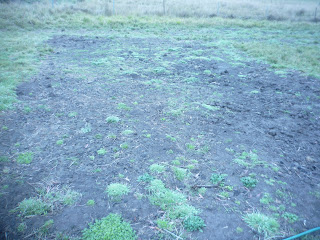Some years after we purchased Opportunity Farm we found a well. We knew that there might be one but had not sought to find it. Anyway its location was pointed out and we investigated to find a beautifully constructed dry stone well - about 3.5m deep - that tapped into groundwater that flows into the boggy area below our property.
After cleaning up the rotten timber and leaves that had been covering it, we raised the sides to above ground so we could put an effective cover on it.
Then we put in some concrete stumps nearby to make a tank stand and assembled a tank which is filled by a submerged pump powered by two solar panels. Once the tank is full the pump turns itself off.
The waterer and the pig trough. Before the pump was put in we had to fill the trough up twice a day by bucketing from a nearby dam. The pigs would then jump in and spill much of the water leaving either none to drink or just an unappetising or healthy muddy puddle.































